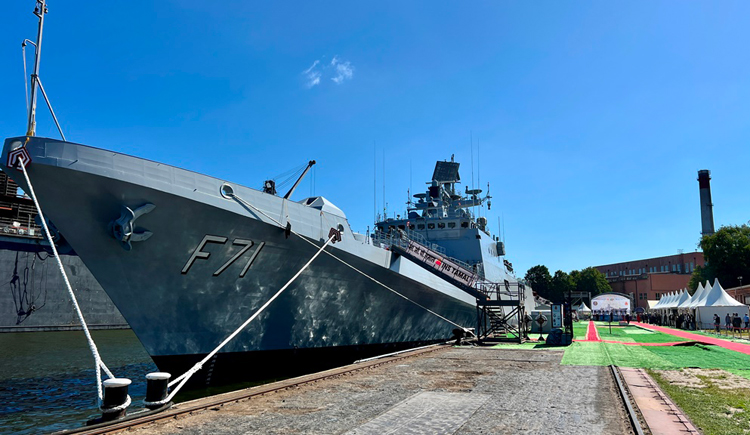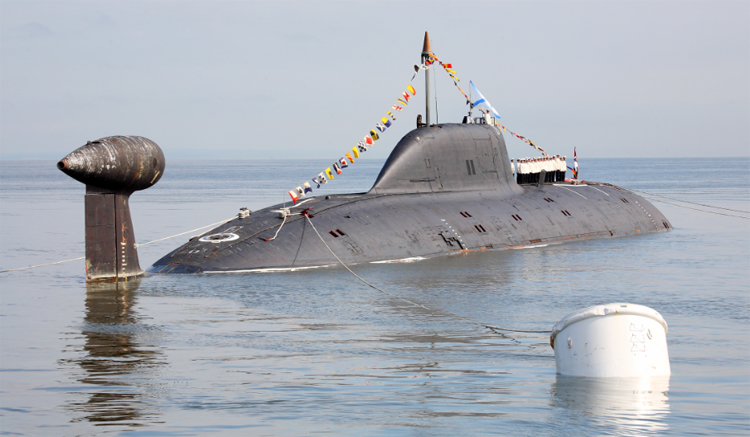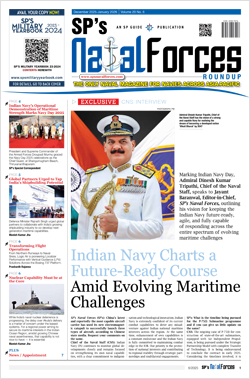INDIAN ARMED FORCES CHIEFS ON OUR RELENTLESS AND FOCUSED PUBLISHING EFFORTS

The insightful articles, inspiring narrations and analytical perspectives presented by the Editorial Team, establish an alluring connect with the reader. My compliments and best wishes to SP Guide Publications.

"Over the past 60 years, the growth of SP Guide Publications has mirrored the rising stature of Indian Navy. Its well-researched and informative magazines on Defence and Aerospace sector have served to shape an educated opinion of our military personnel, policy makers and the public alike. I wish SP's Publication team continued success, fair winds and following seas in all future endeavour!"

Since, its inception in 1964, SP Guide Publications has consistently demonstrated commitment to high-quality journalism in the aerospace and defence sectors, earning a well-deserved reputation as Asia's largest media house in this domain. I wish SP Guide Publications continued success in its pursuit of excellence.
- Global Partners Urged to Tap India's Shipbuilding Potential: Rajnath Singh at Samudra Utkarsh
- All about HAMMER Smart Precision Guided Weapon in India — “BEL-Safran Collaboration”
- India, Germany deepen defence ties as High Defence Committee charts ambitious plan
- G20 Summit: A Sign of Global Fracture
- True strategic autonomy will come only when our code is as indigenous as our hardware: Rajnath Singh
- India–Israel Joint Working Group Meeting on defence cooperation to boost technology sharing and co-development
New Ships, Subs, MCMVs for Navy
Indian Navy has achieved a significant twin power upgrade with the commissioning of the Russian-built INS Tamal and the delivery of the indigenous stealth frigate INS Udaygiri, marking a major enhancement in its maritime capabilities
 |
The Author is Former Director General of Information Systems and A Special Forces Veteran, Indian Army |

INS 'Tamal' was commissioned into the Indian Navy on July 1, 2025, at the Yantar Shipyard in Kaliningrad, Russia, in presence of senior Indian and Russian naval officials. The 3,900-tonne, 125-meter-long INS 'Tamal' is the eighth frigate in the Krivak (Project 1135.6) class and the second of the upgraded Tushil class, following INS Tushil' commissioned in December 2024. The frigate features a blend of Indian and Russian technologies, including BrahMos supersonic cruise missiles, advanced air defence systems, a 100mm main gun, Close-In Weapon Systems, anti-submarine rockets, and heavyweight torpedoes. It is designed for blue water operations across all dimensions of naval warfare (air, surface, underwater, and electromagnetic) and is equipped with sophisticated electronic warfare systems and robust defences against nuclear, biological, and chemical (NBC) threats.
With a crew of about 26 officers and 250 sailors, INS Tamal is set for its home-port in Karwar, Karnataka, and is expected to play a crucial role in safeguarding India's maritime interests in the Indian Ocean Region (IOR). Notably, INS Tamal is the last foreign-made warship to be inducted into the Indian Navy, reflecting India's shift towards self-reliance in defence manufacturing.
INS Tamal is the last foreign-made warship to be inducted into the Indian Navy, reflecting India's shift towards self-reliance in defence manufacturing
Concurrently, also on July 1, 2025, the Indian Navy received INS 'Udaygiri', the second ship of the indigenous Project 17A stealth frigate class, built by Mazagon Dock Shipbuilders Ltd (MDL) in Mumbai. Udaygiri is a follow-on to the Shivalik-class frigates, featuring a 4.54 per cent larger hull, improved stealth, and next-generation weapons and sensors. The frigate is powered by a Combined Diesel or Gas propulsion system and managed by an Integrated Platform Management System, enabling operations in blue water environments and the ability to counter both conventional and non-conventional threats.

Udaygiri boasts state-of-the-art sensors and weaponry, including supersonic surface-to-surface missiles, a medium-range surface-to-air missile system, a 76mm main gun, and advanced close-in weapon systems. With 75 per cent indigenous content, Udaygiri exemplifies India's progress in indigenous warship design and the push for self-reliance in defence manufacturing. It is the second of seven Project 17A frigates under construction, with the remaining five to be delivered by the end of 2026.
With 75 per cent indigenous content, Udaygiri exemplifies India's progress in indigenous warship design and the push for self-reliance in defence manufacturing
The Indian Navy has achieved a significant twin power upgrade with the commissioning of the Russian-built INS Tamal and the delivery of the indigenous stealth frigate INS Udaygiri, marking a major enhancement in its maritime capabilities; strengthening its ability to safeguard national maritime interests and maintain security across vital sea lanes in the IOR.
The Ministry of defence (MoD) recently cleared projects worth ₹1.05 lakh crore, including quick-range surface-to-air missiles (QRSAM), mine countermeasure vessels (MCMVs), electronic warfare (EW) systems, armoured recovery vehicles, naval moored mines and a tri-services logistics platforms, according to news reports of July 3, 2025. The Indian Navy received a significant portion of these approvals, including Mine Countermeasure Vessels (MCMVs) which are specialised ships designed to detect and neutralise sea mines, ensuring safe navigation for both military and commercial vessels.
India is also accelerating its nuclear-powered attack submarine (SSN) programme under Project-77, with two submarines now officially cleared for development
To further counter such threats, moored mines or underwater explosives anchored to the seabed to block enemy access to critical maritime areas, were also cleared for the Navy. The Defence Research and Development Organisation (DRDO) has developed a Processor Based Moored Mine (PBMM) which is capable of detecting and destroying surface and sub-surface threats by the acoustic/pressure influence anomaly generated by targets passing in proximity. Also cleared for the Navy was the Super Rapid Gun Mount: a naval artillery system that can target both aerial and surface threats. In addition, Submersible Autonomous Vessels (unmanned platforms) were also approved, which conduct undersea surveillance, mine detection, and anti-submarine operations with minimal risk to personnel.

India is also accelerating its nuclear-powered attack submarine (SSN) programme under Project-77, with two submarines now officially cleared for development. According to news reports of July 8, 2025, India has cleared the development of two nuclear-powered attack submarines under Project-77, with Larsen and Toubro (L&T) playing a central role; in collaboration with the DRDO and the Shipbuilding Centre at Visakhapatnam. These next-gen submarines will be armed with BrahMos and upcoming hypersonic missile systems, enhancing India's maritime strike capabilities.
Russia is to supply India with an upgraded Akula-class submarine armed with 1,500-km range 'Kalibr' missiles by 2028. The submarine, part of a $3 billion deal between India and Russia in 2019, will bolster India's underwater warfare capabilities.
India eventually plans to build a fleet of six nuclear-powered attack submarines under Project-77. Powered by nuclear reactors, these submarines can operate underwater for extended durations and travel at higher speeds than conventional ones. They are expected to carry an evolved version of the BrahMos missile and future hypersonic systems currently under development by DRDO. These advanced weapons could offer strike ranges between 1,500 and 2,000 kilometres, allowing submarines to hit high-value targets from safe standoff distances. This extended reach will enable the Indian Navy to conduct deep-strike missions while remaining beyond the detection range of enemy air defence and anti-submarine systems.
In addition to the above, Russia is to supply India with an upgraded Akula-class submarine armed with 1,500-km range 'Kalibr' missiles by 2028 albeit its delivery was earlier scheduled in 2025, according to news reports of July 2, 2025. The submarine, part of a $3 billion deal between India and Russia in 2019, will bolster India's underwater warfare capabilities in the Indo-Pacific region. To compensate for the three-year delay in delivering the Akula-class submarine, Russia has offered to equip the diesel submarine (already leased to India) with an advanced variant of the Kalibr missile – 3M14K (SS-N-30A) cruise missile having a range of 1,500-2,000 km.





